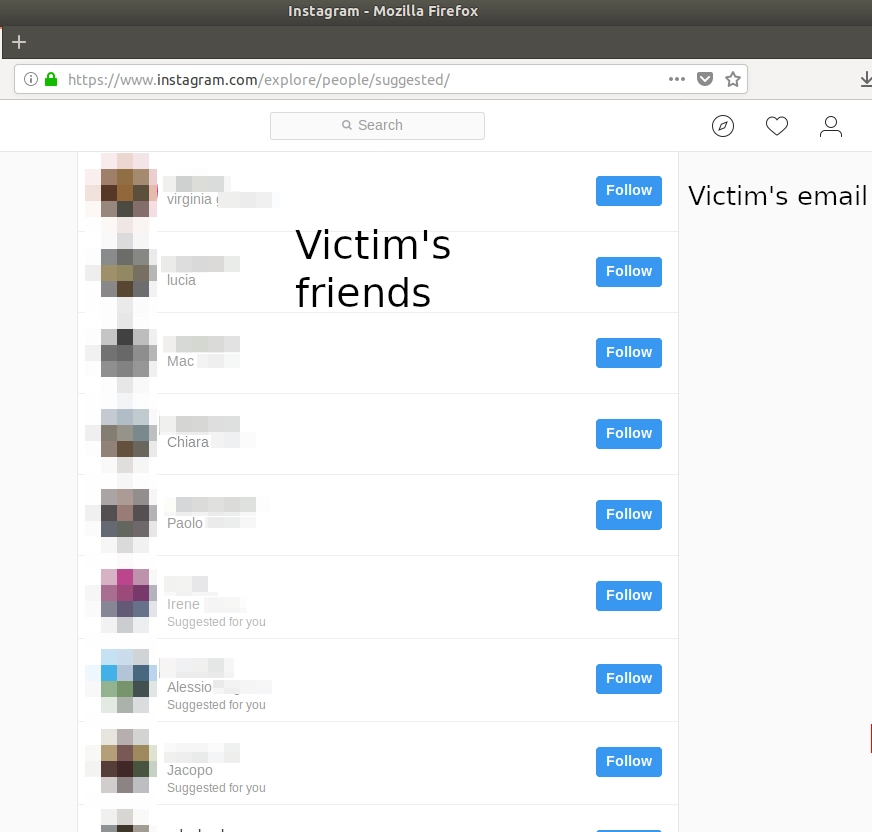On the pratical side, how we will see, disclose of private data is often a unwanted side effect of an useful feature.
Facebook and Instagram
Facebook bought Instagram back in 2012. Since then, a lot of integrations have been implemented between them: among the others, when you suscribe to Instagram, it will suggest you who to follow based on your Facebook friends.
Your Instagram and Facebook accounts are then somehow linked: it happens both if you sign up to Instagram using your Facebook account (doh!), but also if you sign up to Instagram creating a new account but using the same email you use in your Facebook account (there are also other way Instagram links your new account with an existing Facebook account, but they are not of our interest here).
So if you want to create a secret Instagram account, create a new mail for it ;-)
Back in topic: Instagram used to enable all its feature to new users, before they have confirmed their email address. This was to do not “interrupt” usage of the website / app, they would have been time to confirm the email later in their usage.
Email address confirmation is useful to confirm you are signing up using your own email address, and not one of someone else.
Data leak
One of the features available before confirming the email address, was the suggestion of who to follow based on the Facebook friends of the account Instagram automatically linked.
This made super easy to retrieve the Facebook’s friend list of anyone who doesn’t have an Instagram account, and since there are more than 2 billions Facebook accounts but just 800 millions Instagram accounts, it means that at least 1 billion and half accounts were vulnerable.
The method was simple: knowing the email address of the target (and an email address is all but secret), the attacker had just to sign up to Instagram with that email, and then go to the suggestions of people to follow to see victim’s friends.

Conclusion
The combination of two useful features (suggestion of people to follow based on a linked Facebook account, being able to use the new Instagram account immediately) made this data leak possible.
It wasn’t important if the attacker was a Facebook’s friend with the victim, or the privacy settings of the victim’s account on Facebook. Heck, the attacker didn’t need a Facebook account at all!
Timeline
20 August 2018: first disclosure to Facebook
20 August 2018: request of other information from Facebook
20 August 2018: more information provided to Facebook
21 August 2018: Facebook closed the issue saying wasn’t a security issue
21 August 2018: I submitted a new demo with more information
23 August 2018: Facebook confirmed the issue
30 August 2018: Facebook deployed a fix and asked for a test
12 September 2018: Facebook awarded me a bounty
Bounty
Facebook awarded me a $3000 bounty award for the disclosure. This was the first time I was awarded for a security disclosure for Facebook, I am quite happy with the result and I applaude Facebook for making all the process really straightforward.
For any comment, feedback, critic, leave me a comment below or drop an email at [email protected].
Regards, R.

Comments